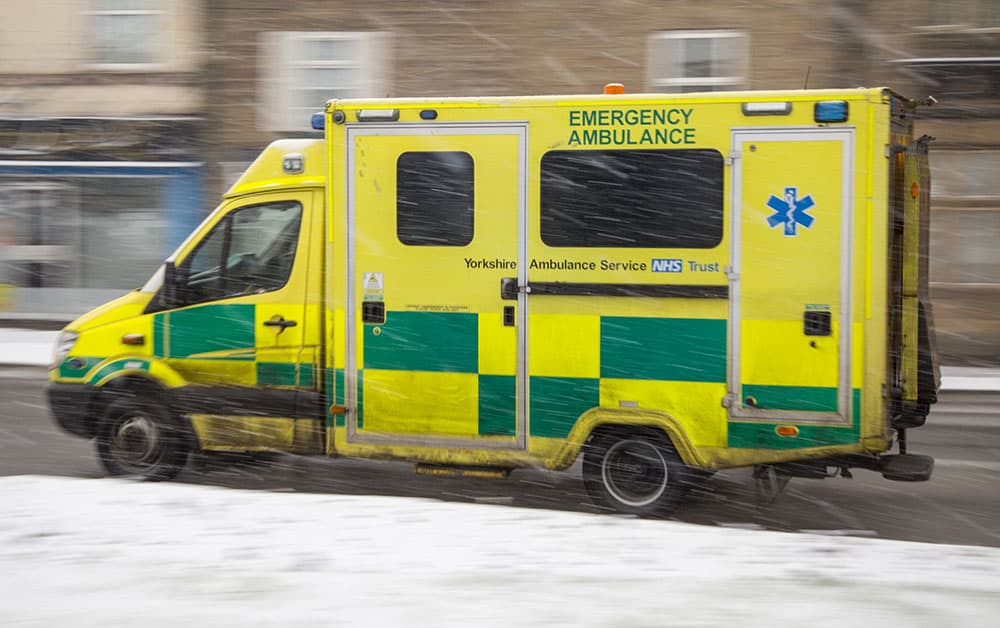Telecare industry and NHS work together to design TEC urgent community response tool
The TEC Services Association (TSA) has helped design an innovative technology-enabled care (TEC) urgent community response tool that improves responsiveness to patient and eases pressure on ambulance services.
It comes at a time when ambulance services are under immense pressure. For example, the most recent NHS England Ambulance Quality Indicators statistics for the period September 2022 show that the mean average response time for the most urgent Category, C1, was nine minutes 19 seconds. This means that the C1 seven-minute mean standard was not met.
To help with this issue, TSA launched a pilot decision-making support tool to redirect calls to urgent community response (UCR) teams that would ordinarily go to ambulance services.
In England alone, NHS responded to 26,011 999 calls in September 2022. This equates to more than 860 calls per day – a very high volume of calls for NHS England to deal with.
One of the biggest pressures on NHS ambulance services throughout the UK are falls. According to the NHS, roughly a third of adults over 65 and half of people over 80 will have at least one fall a year. Often people will fall in their own homes.
Typically, people who are at risk of falling have alarms at home, such as pendants or wrist alarms. When they raise an alarm, a non-clinical TEC call handler will investigate the incident.
In some areas, non-clinical TEC call handlers can alert a TEC falls responder service to help someone who has had a fall at home. However, in many other cases, the only option has been to call for an ambulance, TSA explains.
The new UCR decision-making support tool now helps the call handler to determine the level of risk. If the risk is high, then calling an ambulance is the most appropriate action, but for other levels of risk, they can refer the individual to the UCR team.
UCR teams across the country have been asked to respond to a minimum of nine clinical conditions or needs that are listed in the national guidance.
Since April 2022, virtually every community in England has a UCR team, operating at least 12 hours a day, seven days a week.
Highly experienced, advanced clinical professionals, with the support of social care, can see and assess people whose health has suddenly deteriorated in their own home. Nationally, UCR teams are seeing nearly 80 percent of patients in less than two hours.
Alarm-receiving centres (ARC) have TEC call handlers who are not trained to do a clinical triage, but all UCR teams have health professionals – nurses, therapists, GPs, physician associates – on hand to assess each call. If they think an ambulance is needed, then that 999 call can be made.
TSA believes that UCR teams will be able to respond to many incidents referred by ARCs and TEC response services. Audits in the northwest estimate that 9-11 percent of hospital emergency admissions could be avoided in this way.
The tool has been in germination since the national UCR team ran a 100-day challenge to encourage ambulance services and UCR teams to develop new referral pathways.
As part of the challenge, the TSA agreed to look at how alarm response services could work more closely with UCR teams.
Therefore, the UCR TEC tool is a collaboration between NHS England, TSA, and the following TEC organisations: Progress Housing, a housing association and TEC provider covering Lancashire; Taking Care, a subsidiary of Axa PPP providing a national TEC service; and Medequip Connect, a TEC provider and response service.
Warrington council is also involved. It has about 3,000 people with alarms at home. The council has a 24-hour responder service, and, since earlier this year, responders have been working closely with the UCR team to identify the most appropriate clinical response on a case-by-case basis.
The tool, which also includes the use of an online directory called NHS Service Finder, is currently being tested to ensure it is effective in directing people to either UCR, Falls Response, other community service, ambulance service, and/or family.
TSA says it is triangulating data and feedback from the TEC providers, UCR teams, ambulance services, and patients to make sure that calls and call volumes could be safely referred from TEC providers to UCR services.
The association hopes to demonstrate a positive impact, so that it can rollout the decision-making support tool with TEC services using NHS Service Finder nationally over the winter period. This would support people to remain at home and, in doing so, avoid an unnecessary ambulance call and potential conveyance to hospital.


